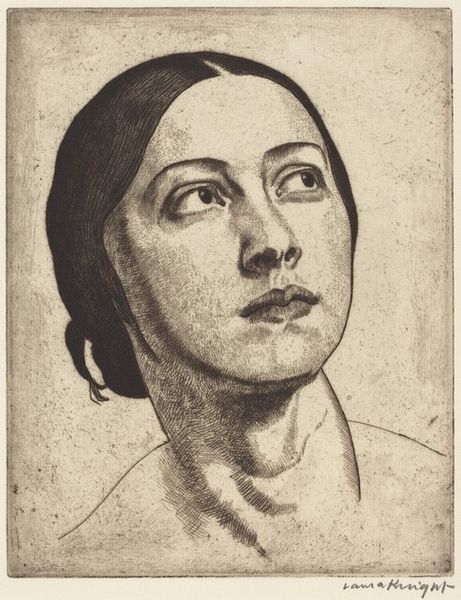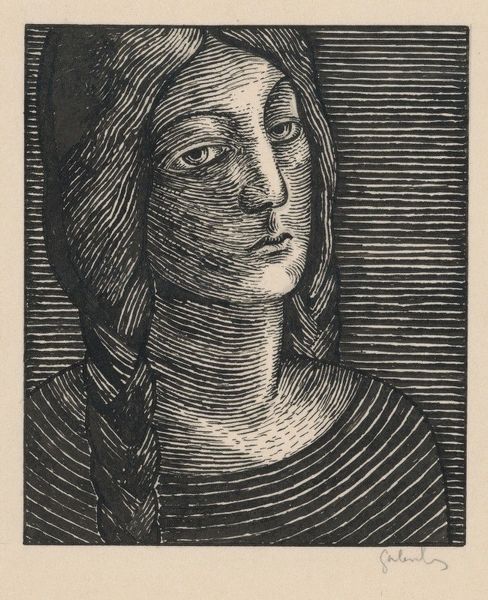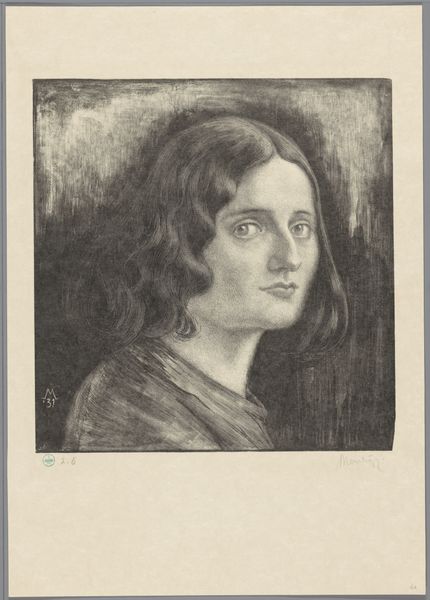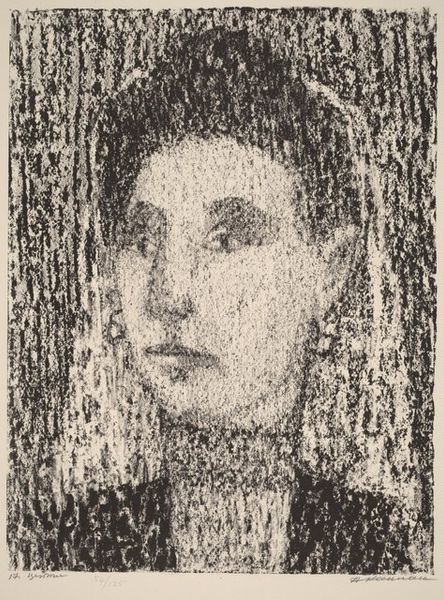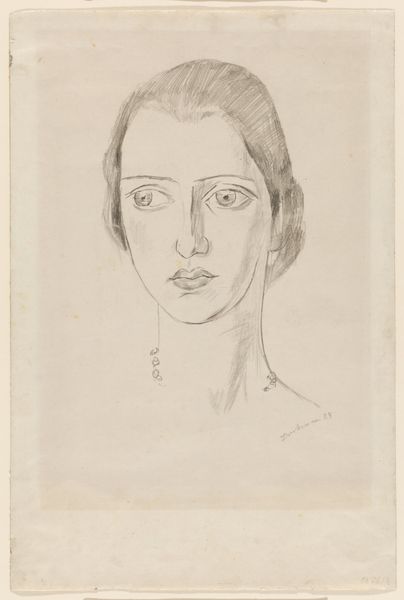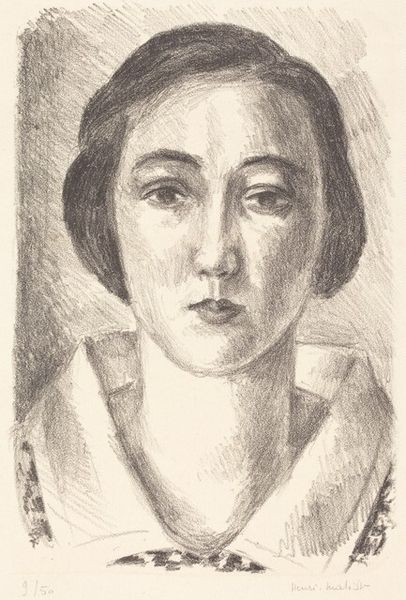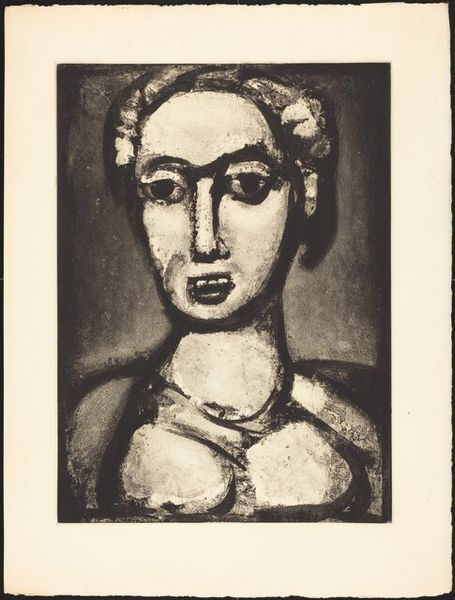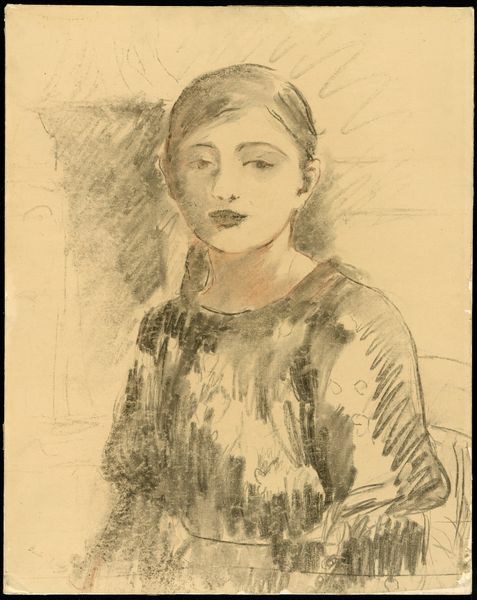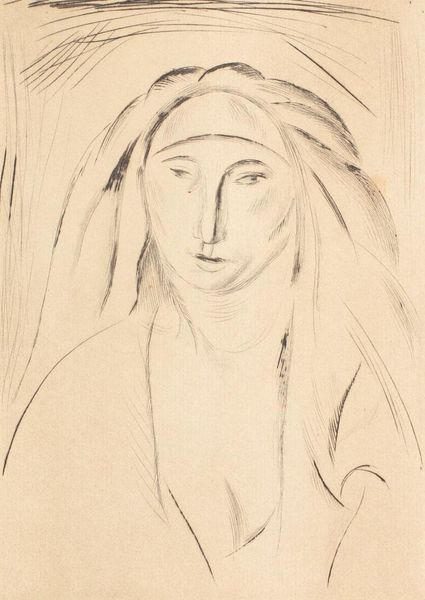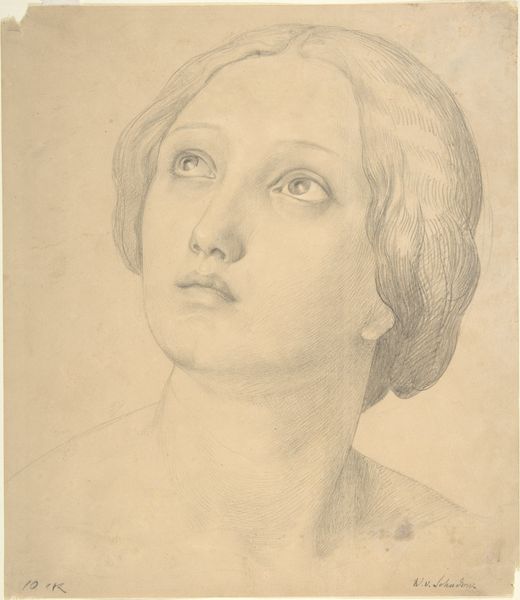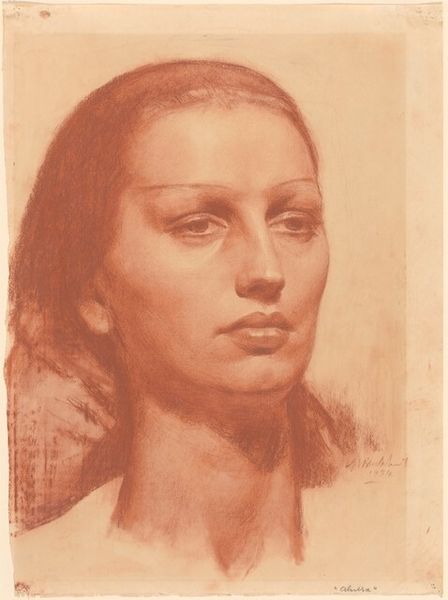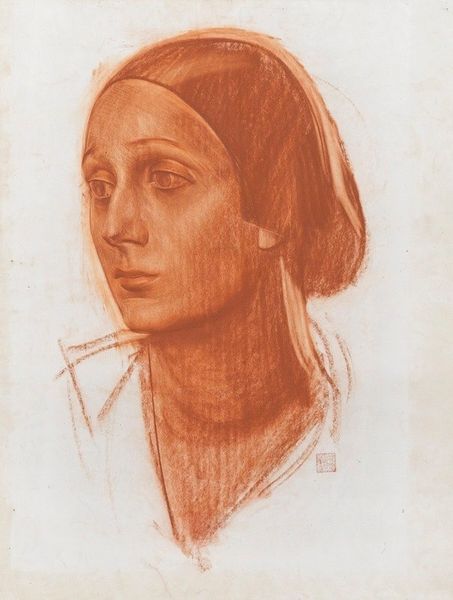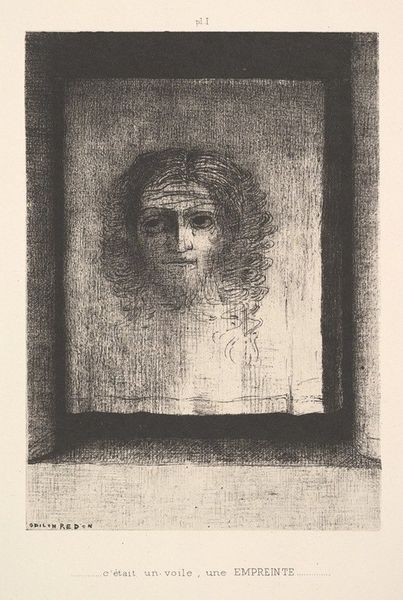
print, etching
#
portrait
#
art-deco
# print
#
etching
#
portrait reference
#
limited contrast and shading
#
portrait drawing
Dimensions: plate: 28.89 × 19.69 cm (11 3/8 × 7 3/4 in.) sheet: 46.99 × 30 cm (18 1/2 × 11 13/16 in.)
Copyright: National Gallery of Art: CC0 1.0
Curator: George Constant's "Head of a Girl," created in 1930, presents us with a compelling portrait in etching. Editor: Immediately, I'm struck by the texture—that slightly rough, almost powdery quality achieved by the etching process. It gives the portrait a subdued, introspective mood. Curator: It is fascinating how this work intertwines artistic expression with its socio-political roots. Looking back at the era when it was produced, the Great Depression, the somber mood could also reflect widespread financial worries of the common population during this challenging period. It brings questions of gender and labor. Who was this girl, what was her role in that society? Editor: I see that, but I also find it fascinating as a material object. To achieve this effect, the artist would have meticulously worked with acid to bite into the metal plate, controlling depth and tone. You know, each stage demanding immense skill and patience from Constant. This emphasizes the artist’s labor. Curator: Indeed. The art-deco elements are prominent as well, you can sense this impact when contemplating its style, but it almost lacks the optimism commonly related to it; a quiet melancholy seems to take over it all. How does this relate to women representation at the time, and their social and political roles? It definitely echoes a desire to find strength amidst fragility. Editor: Yes. This reminds me of the prints of the WPA, where images of laborers were promoted to foster an artistic discourse related to manufacturing. Here, it is less direct. One needs to dive into the artistic process itself to notice how each line reflects material practices that shaped gender in the society of that moment. Curator: Absolutely. It calls to mind the important discourse of labor. “Head of a Girl”, becomes a symbol for introspection that challenges and captivates us, urging reflection about art’s capacity to mirror, question, and critique society's underlying assumptions and structures. Editor: Agreed. By engaging with the making process and materials, one can peel away its social layers.
Comments
No comments
Be the first to comment and join the conversation on the ultimate creative platform.
